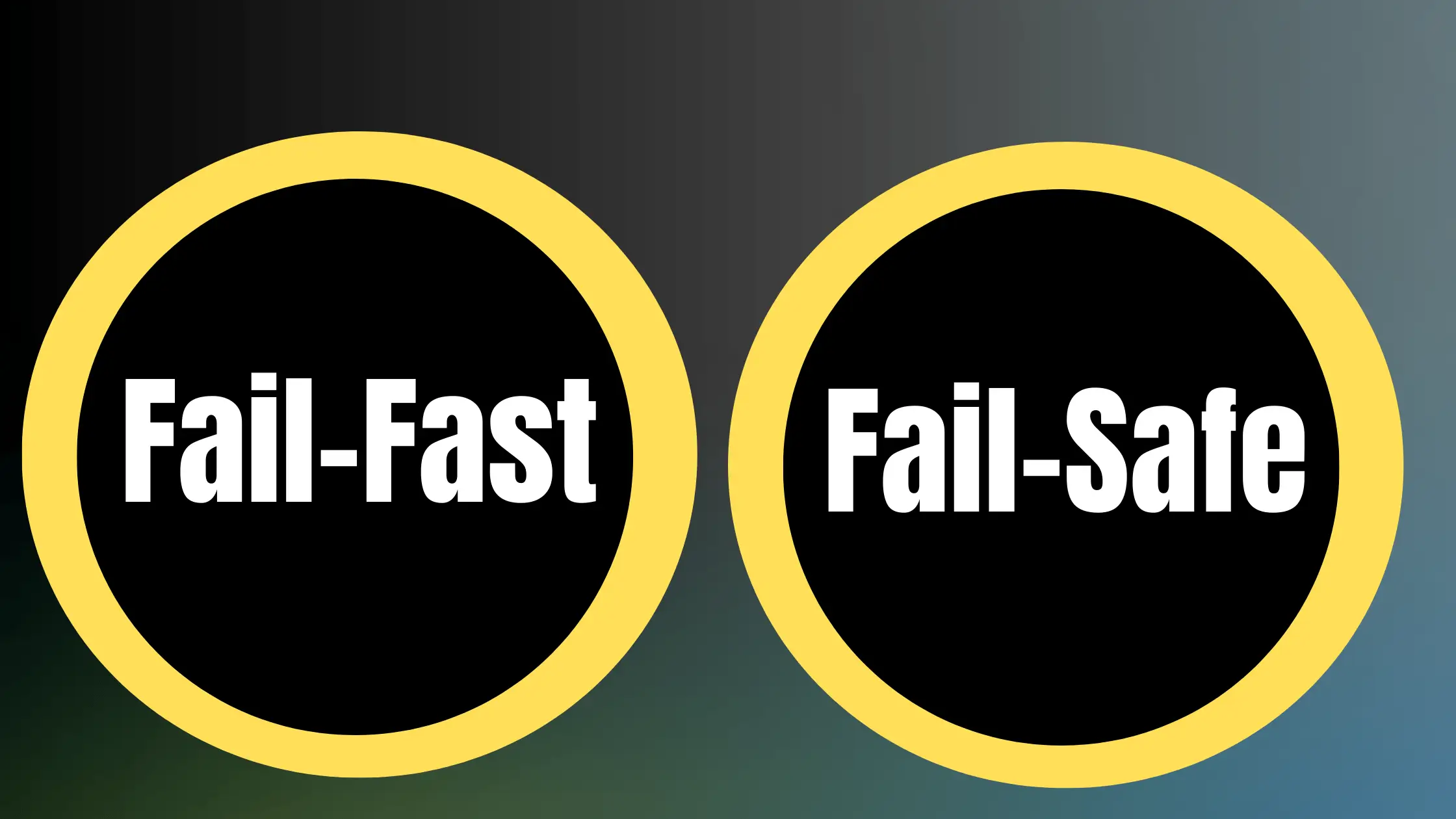As technology becomes increasingly intertwined with our daily lives, it is essential for designers to consider the ethical implications of their work. Ethical design is an approach that prioritizes the well-being and best interests of users, society, and the environment. This article explores the concept of ethical design, its importance, key principles, and practical strategies for implementing it in various contexts.
Understanding Ethical Design
Ethical design is a framework that integrates moral principles and values into the design process. It aims to create products, services, and experiences that are not only functional and aesthetically pleasing but also align with ethical considerations. By incorporating ethics into design decisions, designers can ensure that their creations have a positive impact on individuals and society as a whole.
Definition of Ethical Design
At its core, ethical design is about making conscious and deliberate choices that prioritize the well-being of users and stakeholders. It involves considering the potential consequences of design decisions and striving to create solutions that are fair, inclusive, transparent, and socially responsible. Ethical design recognizes the power and influence that designers wield and seeks to use that power for the greater good.
Ethical design goes beyond compliance with legal requirements and industry standards. It is a proactive approach that considers the broader ethical implications of design choices. It involves asking critical questions about the purpose, impact, and potential unintended consequences of design solutions. Ethical designers strive to create products and services that not only meet user needs but also contribute to a more equitable, sustainable, and just society.
Historical Context of Ethical Design
The concept of ethical design has its roots in various disciplines, including philosophy, sociology, and human-computer interaction. Throughout history, there have been discussions and debates about the moral responsibilities of designers and the impact of their creations on society.
In the early days of industrialization, there were concerns about the working conditions and safety of factory workers. Designers and engineers were called upon to create solutions that prioritized worker well-being and mitigated the negative impacts of mass production. This led to the development of ergonomic principles and safety standards in product design.
As technology advanced and digital products became more prevalent, the focus of ethical design shifted to issues such as privacy, security, and accessibility. The rise of the internet and mobile devices brought new challenges and ethical considerations, such as data collection, algorithmic bias, and the potential for technology addiction.
In recent years, there has been a growing recognition of the need for ethical design in the tech industry. High-profile controversies, such as the Cambridge Analytica scandal and the spread of misinformation on social media platforms, have highlighted the importance of considering the ethical implications of technology. Organizations and industry groups have developed ethical design guidelines and frameworks to help designers navigate these complex issues.
Importance of Ethical Design
In an increasingly digital world, the importance of ethical design cannot be overstated. Here are some key reasons why ethical design matters:
- User trust and loyalty: When users feel that a product or service aligns with their values and has their best interests in mind, they are more likely to trust and remain loyal to the brand. Ethical design fosters a sense of reliability and integrity, leading to long-term user engagement and satisfaction.
- Social responsibility: Designers have a responsibility to consider the broader societal implications of their work. Ethical design ensures that products and services contribute positively to society, addressing issues such as accessibility, inclusivity, privacy, and environmental sustainability.
- Mitigating unintended consequences: Unethical design choices can have unintended and harmful consequences. For example, a social media platform designed to maximize user engagement may inadvertently contribute to addiction, mental health issues, or the spread of misinformation. Ethical design proactively identifies and mitigates potential negative impacts.
- Compliance with regulations: As governments and regulatory bodies increasingly focus on technology’s impact on society, ethical design becomes crucial for compliance. By adhering to ethical principles, designers can ensure that their creations meet legal and regulatory requirements, avoiding potential legal and reputational risks.
- Driving positive change: Ethical design has the power to drive positive change in society. By prioritizing values such as inclusivity, sustainability, and social responsibility, designers can create products and services that contribute to a more equitable and just world.
Ethical design is not just a moral imperative; it is also a strategic business decision. Companies that prioritize ethical considerations in their design processes are more likely to build trust with their users, differentiate themselves in the market, and create long-term value for all stakeholders.
Key Principles of Ethical Design
To practice ethical design effectively, designers should adhere to a set of guiding principles. These principles serve as a framework for making informed and morally sound design decisions. Here are some key principles of ethical design:
1. Empathy and User-Centered Approach
Ethical design starts with empathy and a deep understanding of users’ needs, desires, and challenges. Designers should prioritize the well-being and best interests of users throughout the design process. This involves conducting user research, gathering insights, and actively involving users in the design and development stages.
Conducting User Research
User research is essential for gaining a comprehensive understanding of users’ perspectives, behaviors, and contexts. Designers should employ various research methods, such as interviews, surveys, usability testing, and ethnographic studies, to gather valuable insights. By engaging with diverse user groups, designers can identify potential ethical concerns and ensure that their solutions are inclusive and user-centric.
User research should go beyond demographics and usage patterns to uncover deeper insights into users’ values, motivations, and pain points. Designers should strive to understand the social, cultural, and environmental factors that influence user behavior and decision-making. This holistic approach to user research helps designers create solutions that are not only functional but also aligned with users’ ethical values and expectations.
Involving Users in the Design Process
Ethical design should involve users as active participants in the design process. This can be achieved through co-design workshops, participatory design sessions, and user feedback loops. By collaborating with users, designers can ensure that their solutions are aligned with users’ values, needs, and expectations. User involvement also promotes transparency and builds trust between designers and users.
Participatory design approaches recognize users as experts in their own experiences and empower them to shape the products and services they use. Designers should create opportunities for users to provide input, share their perspectives, and contribute to the design process. This can be done through user interviews, focus groups, or online communities where users can provide feedback and suggestions.
Involving users in the design process also helps to identify and address potential ethical concerns early on. Users may raise issues or concerns that designers may not have considered, such as accessibility barriers or privacy risks. By actively listening to and incorporating user feedback, designers can create solutions that are more ethically sound and responsive to user needs.
2. Inclusivity and Accessibility
Ethical design prioritizes inclusivity and accessibility, ensuring that products and services are usable and beneficial for all individuals, regardless of their abilities, backgrounds, or circumstances. Designers should strive to create solutions that are accessible to the widest possible audience, considering factors such as age, disability, language, and cultural diversity.
Designing for Accessibility
Designers should follow accessibility guidelines and standards to ensure that their creations are usable by individuals with disabilities. This includes considerations such as color contrast, font sizes, keyboard navigation, and alternative text for images. By designing for accessibility, designers not only comply with legal requirements but also demonstrate a commitment to inclusivity and equal access.
Accessibility goes beyond technical considerations and includes designing for cognitive, sensory, and physical abilities. Designers should consider the diverse needs of users with different types of disabilities, such as visual impairments, hearing impairments, motor disabilities, and cognitive disabilities. This may involve providing alternative modes of interaction, such as voice commands or gesture-based controls, or offering customization options to accommodate individual preferences.
Designing for accessibility also benefits a wider range of users beyond those with disabilities. For example, using clear and legible fonts, providing adequate color contrast, and offering closed captions for videos can improve usability for all users, including those with low vision, those in low-light environments, or those in noisy surroundings.
Embracing Diversity and Inclusion
Ethical design goes beyond accessibility and actively embraces diversity and inclusion. Designers should consider the diverse needs, preferences, and cultural contexts of their target audience. This involves using inclusive language, avoiding stereotypes and biases, and representing diverse populations in design elements such as illustrations and imagery. By designing with diversity and inclusion in mind, designers can create solutions that resonate with a broader range of users and promote social equity.
Inclusive design recognizes that users come from diverse backgrounds and have different identities, experiences, and perspectives. Designers should strive to create products and services that are welcoming and inclusive to all users, regardless of their race, ethnicity, gender, sexual orientation, age, or socioeconomic status. This may involve conducting user research with diverse populations, seeking input from underrepresented groups, and actively challenging assumptions and biases in the design process.
Inclusive design also involves considering the cultural context in which products and services are used. Designers should be aware of cultural differences, social norms, and local customs when creating solutions for a global audience. This may involve adapting design elements, such as colors, symbols, or imagery, to be culturally appropriate and respectful.
3. Transparency and Informed Consent
Ethical design prioritizes transparency and informed consent, ensuring that users are fully aware of how their data is collected, used, and shared. Designers should provide clear and concise information about data practices, giving users control over their personal information and respecting their privacy preferences.
Providing Clear Privacy Policies
Designers should develop clear and understandable privacy policies that explain how user data is collected, stored, and used. These policies should be easily accessible and written in plain language, avoiding legal jargon and technical terminology. By providing transparent privacy policies, designers can build trust with users and empower them to make informed decisions about their data.
Privacy policies should clearly communicate what types of data are collected, for what purposes, and with whom the data is shared. Designers should also explain how long data is retained, how it is secured, and what rights users have regarding their data, such as the ability to access, correct, or delete their information.
In addition to written privacy policies, designers should consider using visual aids, such as icons or infographics, to make data practices more accessible and understandable to users. Clear and prominent notices should be provided at the point of data collection, such as when users sign up for a service or provide personal information.
Obtaining Informed Consent
Ethical design requires obtaining informed consent from users before collecting or processing their personal data. Designers should provide users with meaningful choices and control over their data, allowing them to opt-in or opt-out of data collection and usage. Consent should be freely given, specific, and unambiguous, and users should have the ability to withdraw their consent at any time.
Informed consent goes beyond a simple checkbox or agreement to terms of service. Designers should provide users with clear and concise information about the implications of their consent, including the benefits and risks of sharing their data. Users should be able to easily understand what they are consenting to and have the opportunity to ask questions or seek clarification.
Designers should also consider the context in which consent is obtained. In some cases, such as when dealing with sensitive personal information or when targeting vulnerable populations, additional safeguards may be necessary to ensure that consent is truly informed and freely given. This may involve providing more detailed explanations, offering alternative options, or seeking explicit consent for specific data processing activities.
4. Privacy and Security
Ethical design prioritizes the protection of user privacy and the security of their personal data. Designers should implement robust security measures to safeguard user information from unauthorized access, breaches, and misuse. This includes using encryption, secure data storage practices, and regular security audits.
Implementing Privacy by Design
Privacy by Design is a proactive approach that integrates privacy considerations into the design process from the outset. Designers should incorporate privacy-enhancing technologies and practices, such as data minimization, pseudonymization, and anonymization, to minimize the collection and retention of personal data. By designing with privacy in mind, designers can reduce the risk of privacy violations and build trust with users.
Privacy by Design principles include:
- Proactive, not reactive: Privacy should be considered from the beginning of the design process, rather than as an afterthought or in response to incidents.
- Privacy as the default setting: Products and services should be designed with privacy as the default, requiring users to actively opt-in to data collection or sharing.
- Privacy embedded into design: Privacy should be an integral part of the design, not an add-on or optional feature.
- Full functionality – positive-sum, not zero-sum: Privacy and security measures should enhance the user experience, not detract from it.
- End-to-end security – full lifecycle protection: Privacy and security should be maintained throughout the entire data lifecycle, from collection to deletion.
- Visibility and transparency: Data practices should be transparent and easily understandable to users.
- Respect for user privacy: Products and services should prioritize user privacy and empower users to control their personal information.
By incorporating these principles into the design process, designers can create products and services that respect user privacy and build trust with their audience.
Ensuring Data Security
Ethical design requires implementing strong security measures to protect user data from unauthorized access and breaches. Designers should follow industry best practices, such as using secure communication protocols, implementing access controls, and regularly updating security patches. In the event of a data breach, designers should have a robust incident response plan in place to promptly notify affected users and mitigate potential harm.
Data security measures should be proportional to the sensitivity of the data being collected and processed. Designers should conduct risk assessments to identify potential vulnerabilities and implement appropriate safeguards, such as encryption, secure authentication methods, and regular security audits.
Designers should also consider the security of third-party services and integrations used in their products. When partnering with external vendors or using third-party APIs, designers should ensure that these services adhere to the same security standards and have appropriate data protection measures in place.
User education and awareness are also critical components of data security. Designers should provide users with guidance on how to protect their accounts and personal information, such as using strong passwords, enabling two-factor authentication, and being cautious of phishing attempts. By empowering users to take an active role in their own security, designers can create a more resilient and secure ecosystem.
5. Sustainability and Environmental Responsibility
Ethical design considers the environmental impact of products and services, striving to minimize negative consequences and promote sustainability. Designers should prioritize eco-friendly materials, energy efficiency, and product longevity to reduce waste and conserve resources.
Designing for Sustainability
Designers should incorporate sustainable design principles into their work, considering the entire lifecycle of a product or service. This includes selecting materials that are recyclable, biodegradable, or sourced from renewable resources. Designers should also consider the energy consumption and carbon footprint of their creations, opting for energy-efficient technologies and renewable energy sources when possible.
Sustainable design involves considering the environmental impact of products throughout their entire lifecycle, from raw material extraction to manufacturing, distribution, use, and end-of-life disposal. Designers should strive to create products that are durable, repairable, and upgradable, extending their useful life and reducing the need for frequent replacements.
Designers should also consider the packaging and transportation of their products, opting for minimal and eco-friendly packaging materials and optimizing logistics to reduce carbon emissions. Digital products and services can also have a significant environmental impact, such as the energy consumption of data centers and the e-waste generated by discarded devices. Designers should consider the environmental footprint of their digital creations and strive to optimize resource usage and minimize waste.
Promoting Responsible Consumption
Ethical design promotes responsible consumption by encouraging users to make sustainable choices. Designers can incorporate features that educate users about the environmental impact of their actions and provide incentives for eco-friendly behavior. This can include promoting the reuse and recycling of products, providing information about energy-saving settings, or offering rewards for sustainable practices.
Responsible consumption also involves designing products and services that meet actual user needs, rather than promoting excessive consumption or planned obsolescence. Designers should strive to create solutions that are durable, adaptable, and scalable, allowing users to get the most value out of their purchases and reducing the need for constant upgrades or replacements.
Designers can also promote responsible consumption by providing users with information and resources to make informed purchasing decisions. This can include transparency about the materials used, the production process, and the environmental impact of products. By empowering users with knowledge and options, designers can encourage more sustainable consumption patterns and contribute to a circular economy.
6. Fairness and Non-Discrimination
Ethical design ensures that products and services are fair and non-discriminatory, avoiding biases and promoting equal treatment for all users. Designers should be aware of potential biases in algorithms, data sets, and design decisions, and actively work to mitigate them.
Addressing Algorithmic Bias
Algorithmic bias occurs when machine learning models or automated systems perpetuate or amplify existing societal biases. Designers should be aware of the potential for algorithmic bias and take steps to mitigate it. This includes using diverse and representative data sets for training, conducting regular audits to identify and address biases, and implementing fairness metrics to ensure equitable outcomes.
Algorithmic bias can have significant impacts on individuals and society, leading to unfair treatment, discrimination, and the reinforcement of existing inequalities. Designers should be proactive in identifying and addressing algorithmic bias, recognizing that biases can be embedded in data, models, and decision-making processes.
To mitigate algorithmic bias, designers should ensure that the data used to train algorithms is diverse, representative, and free from historical biases. They should also regularly audit algorithms for fairness and implement techniques such as counterfactual fairness, which involves testing algorithms under different hypothetical scenarios to identify potential biases.
Promoting Diversity and Inclusion in Design Teams
Ethical design requires diverse and inclusive design teams that bring different perspectives and experiences to the table. Designers should actively seek to build teams that represent a wide range of backgrounds, identities, and perspectives. By fostering diversity and inclusion within design teams, organizations can create solutions that are more inclusive, equitable, and responsive to the needs of diverse user groups.
Diversity in design teams goes beyond demographics and includes diversity of thought, skills, and experiences. Designers from different cultural backgrounds, educational backgrounds, and life experiences can bring unique insights and approaches to the design process. This diversity can lead to more creative and innovative solutions that consider a wider range of user needs and preferences.
Inclusive design teams also create a more welcoming and supportive work environment, where all team members feel valued and respected. This can lead to higher employee satisfaction, retention, and productivity, as well as a more positive organizational culture.
To promote diversity and inclusion in design teams, organizations should:
- Actively recruit diverse candidates: Seek out candidates from underrepresented groups and diverse backgrounds, using inclusive job descriptions and recruiting practices.
- Provide inclusive onboarding and training: Ensure that all team members feel welcome and supported, and provide training on diversity, inclusion, and unconscious bias.
- Foster an inclusive culture: Encourage open communication, respect for different perspectives, and a culture of belonging and psychological safety.
- Provide opportunities for growth and advancement: Ensure that all team members have equal access to professional development, mentorship, and leadership opportunities.
- Measure and report on diversity and inclusion: Regularly assess the diversity and inclusivity of design teams, set goals for improvement, and report on progress to stakeholders.
By building diverse and inclusive design teams, organizations can create products and services that are more ethical, equitable, and responsive to the needs of a diverse user base.
Implementing Ethical Design in Practice
Putting ethical design principles into practice requires a systematic and intentional approach. Here are some practical strategies for implementing ethical design in various contexts:
1. Establishing an Ethical Design Framework
Organizations should establish an ethical design framework that outlines the guiding principles and values that inform their design decisions. This framework should be developed collaboratively, involving stakeholders from different departments and levels of the organization. The framework should be communicated clearly to all team members and integrated into the design process.
An ethical design framework should include:
- Guiding principles: The core ethical principles that guide design decisions, such as empathy, inclusivity, transparency, privacy, sustainability, and fairness.
- Design standards: Specific standards and guidelines for implementing ethical design principles in practice, such as accessibility guidelines, privacy standards, and sustainability criteria.
- Evaluation criteria: Metrics and criteria for evaluating the ethical impact of design decisions, such as user satisfaction, privacy protection, environmental sustainability, and social equity.
- Governance and accountability: Roles and responsibilities for overseeing the implementation of the ethical design framework, and mechanisms for holding team members accountable for adhering to ethical principles.
- Continuous improvement: Processes for regularly reviewing and updating the ethical design framework based on new insights, feedback, and evolving societal expectations.
By establishing an ethical design framework, organizations can ensure that ethical considerations are consistently integrated into the design process and that all team members are aligned around a shared set of values and principles.
2. Conducting Ethical Impact Assessments
Ethical impact assessments are a tool for identifying and evaluating the potential ethical implications of design decisions. Designers should conduct these assessments at various stages of the design process, considering factors such as user privacy, data security, accessibility, inclusivity, and environmental sustainability. The results of these assessments should inform design iterations and improvements.
An ethical impact assessment should include:
- Identification of ethical risks: Identifying potential ethical risks and concerns associated with the design, such as privacy violations, algorithmic bias, or environmental harm.
- Evaluation of impact: Assessing the likelihood and severity of identified risks, and their potential impact on users, society, and the environment.
- Mitigation strategies: Developing strategies to mitigate or eliminate identified risks, such as implementing privacy-enhancing technologies, conducting fairness audits, or redesigning features to be more inclusive.
- Stakeholder engagement: Engaging with relevant stakeholders, such as users, community members, and domain experts, to gather feedback and insights on potential ethical concerns.
- Continuous monitoring: Establishing processes for ongoing monitoring and evaluation of the ethical impact of the design, and making adjustments as needed based on new information or changing circumstances.
By conducting ethical impact assessments, designers can proactively identify and address potential ethical issues, and ensure that their creations are aligned with ethical principles and values.
3. Fostering an Ethical Design Culture
Implementing ethical design requires a supportive organizational culture that values ethics and social responsibility. Leaders should prioritize ethical considerations in decision-making and provide resources and training to support ethical design practices. Regular discussions and workshops on ethical design topics can help raise awareness and foster a shared commitment to ethical principles.
To foster an ethical design culture, organizations should:
- Lead by example: Leaders should model ethical behavior and decision-making, and communicate the importance of ethical design to all team members.
- Provide training and resources: Offer training and resources on ethical design principles, best practices, and tools, and encourage team members to continuously learn and improve their ethical design skills.
- Encourage open communication: Create a culture of open communication and transparency, where team members feel comfortable raising ethical concerns and discussing potential solutions.
- Recognize and reward ethical behavior: Recognize and reward team members who demonstrate a commitment to ethical design principles, and celebrate successes in creating more inclusive, sustainable, and socially responsible products and services.
- Integrate ethics into performance evaluations: Include ethical design considerations in performance evaluations and promotion decisions, to ensure that team members are held accountable for adhering to ethical principles.
By fostering an ethical design culture, organizations can create a shared sense of purpose and commitment to creating products and services that have a positive impact on users, society, and the environment.
4. Collaborating with Diverse Stakeholders
Ethical design benefits from collaboration with diverse stakeholders, including users, community members, domain experts, and ethics professionals. Designers should actively seek input and feedback from these stakeholders throughout the design process. Collaborative approaches, such as participatory design and co-creation, can help ensure that diverse perspectives are incorporated into design solutions.
Collaboration with diverse stakeholders can take many forms, such as:
- User research and testing: Conducting user research and testing with diverse user groups, to gather insights and feedback on potential ethical concerns and user needs.
- Community engagement: Engaging with local communities and organizations to understand their unique needs and perspectives, and to co-create solutions that are responsive to their context.
- Expert consultations: Seeking input and guidance from domain experts and ethics professionals, such as ethicists, legal experts, and social scientists, to ensure that design decisions are informed by the latest research and best practices.
- Interdisciplinary collaboration: Fostering collaboration among team members from different disciplines, such as design, engineering, product management, and marketing, to ensure that ethical considerations are integrated throughout the product development process.
- Stakeholder feedback loops: Establishing ongoing feedback loops with diverse stakeholders, to gather input and insights throughout the design process and to ensure that solutions remain aligned with their needs and values.
By collaborating with diverse stakeholders, designers can create solutions that are more inclusive, equitable, and responsive to the needs of a diverse user base, and that have a positive impact on society and the environment.
5. Continuous Learning and Improvement
Ethical design is an ongoing process that requires continuous learning and improvement. Designers should stay up-to-date with emerging ethical considerations, technological advancements, and societal changes. Regular evaluation and iteration of design solutions based on user feedback and ethical impact assessments can help ensure that products and services remain aligned with ethical principles over time.
Continuous learning and improvement in ethical design can involve:
- Staying informed: Keeping up-to-date with the latest research, best practices, and case studies in ethical design, through professional development, conferences, and industry publications.
- Seeking feedback: Actively seeking feedback from users, stakeholders, and experts on the ethical impact of design decisions, and using this feedback to inform improvements and iterations.
- Conducting regular audits: Regularly conducting ethical impact assessments and audits of existing products and services, to identify potential ethical risks and areas for improvement.
- Iterating and optimizing: Continuously iterating and optimizing design solutions based on new insights, feedback, and emerging best practices, to ensure that they remain aligned with ethical principles and user needs.
- Sharing knowledge: Sharing knowledge and best practices with the wider design community, through publications, presentations, and open-source contributions, to advance the field of ethical design and contribute to the greater good.
By embracing continuous learning and improvement, designers can ensure that their creations remain relevant, impactful, and aligned with evolving societal expectations and ethical standards.
Case Studies and Examples
To illustrate the application of ethical design principles in practice, let’s explore some case studies and examples from various industries:
1. Inclusive Design in Gaming: Xbox Adaptive Controller
The Xbox Adaptive Controller is an example of inclusive design in the gaming industry. Developed by Microsoft, this controller is designed to accommodate the needs of gamers with limited mobility or dexterity. It features large, programmable buttons and ports for connecting external switches, joysticks, and other assistive devices. By prioritizing accessibility and inclusivity, Microsoft has created a product that enables a wider range of individuals to enjoy gaming experiences.
2. Sustainable Fashion: Patagonia’s Worn Wear Program
Patagonia, an outdoor clothing company, demonstrates ethical design through its Worn Wear program. This initiative encourages customers to repair, reuse, and recycle their Patagonia clothing, promoting sustainable consumption and reducing textile waste. Patagonia offers repair services, provides educational resources on product care, and sells secondhand clothing through its Worn Wear website. By designing for durability and longevity, Patagonia aligns its products with environmental responsibility.
3. Privacy-Focused Social Media: Mastodon
Mastodon is a decentralized social media platform that prioritizes user privacy and control. Unlike centralized platforms like Facebook and Twitter, Mastodon operates on a network of independent servers, each with its own moderation policies and community guidelines. Users have greater control over their data and can choose which server to join based on their privacy preferences. Mastodon’s design aligns with ethical principles of transparency, user autonomy, and data protection.
4. Ethical AI in Healthcare: IBM Watson Health
IBM Watson Health is an AI-powered platform that assists healthcare professionals in making informed decisions and improving patient outcomes. The platform incorporates ethical considerations, such as data privacy, algorithmic fairness, and transparency. IBM has established an AI ethics board to oversee the development and deployment of Watson Health, ensuring that the technology is used responsibly and benefits patients equitably. By prioritizing ethical principles in AI development, IBM demonstrates a commitment to responsible innovation in healthcare.


![Top 8 DSA Project Ideas in 2024 [With Source Code]](https://evuzzo.com/wp-content/uploads/2024/05/DSA-Project-Ideas-in-2024.png)


![Top 15 Software Engineer Projects 2024 [Source Code]](https://evuzzo.com/wp-content/uploads/2024/04/Top-15-Software-Engineer-Projects-2024-Source-Code.webp)

